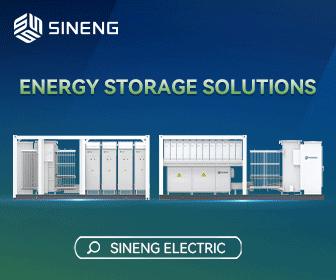Redwood Energy’s Bold Move: A Wake-Up Call for Battery Recyclers and Second-Life Battery Holders
In a recent announcement already reverberating through the clean energy and recycling sectors, Redwood Materials unveiled Redwood Energy, a new initiative that turns the second-life battery conversation from theoretical to tangible. With this move, Redwood is not only expanding its already-dominant footprint in battery recycling but also delivering a loud and clear message: Repurposing isn’t optional anymore. It’s a necessity.
For fleet managers, EV OEMs, and battery recyclers sitting on growing stockpiles of partially depleted EV batteries, this is the proof of concept—and the call to action—you’ve been waiting for.
The Reuse, Repurpose, Recycle Hierarchy—And Where We’ve Gone Wrong
The environmental and economic logic of Reuse, Repurpose, Recycle is simple:
- Reuse - giving a product a second life for its original use – putting an EV battery back into another EV.
- Repurpose - transforming a used product for a new function – turning second-life batteries into an energy storage system.
- Recycle - breaking the product down to its raw materials.
However, with lithium-ion EV batteries, the U.S. industry has largely skipped the first two steps. Instead, we’ve defaulted to a “recycle-first” mindset that sends batteries straight to shred. It’s like taking a bite of a sandwich, declaring you're full, and throwing the rest away. With up to 80% of usable energy still left in many EV battery packs, we’re discarding value, wasting critical mineral resources, and missing a huge opportunity to close the grid's energy gap.
An Impending Energy Crisis Nobody Is Talking About
In 2024 alone, over 1.3 million EVs were sold in the United States, and those numbers are set to grow exponentially. Alongside that growth comes ever-growing piles of retired EV batteries—many with years of energy potential still remaining. Meanwhile, the demand for electricity is climbing fast, driven by data centers, AI computing, EV charging infrastructure, and power-hungry industries like crypto-mining.
The result? A mounting energy-generation demand delta that’s outpacing our ability to deploy new energy generation capacity. As Redwood Materials puts it:
"Redwood Energy offers a faster, lower-cost solution: repurposing used battery packs—with most of their capacity remaining—into modular energy storage systems that bridge today’s infrastructure gaps and maximize value between recovery and recycling."
Redwood’s Advantage: From Recycler to Repurposer
Redwood Materials already recycles more than 20 GWh of batteries annually, about 90% of all lithium-ion batteriesprocessed in North America. While Redwood and other recyclers have done well, margins are thin and new battery chemistries less profitable. Redwood Energy responds to those tightening margins by capturing the untapped value before recycling.
Instead of tearing batteries down to cells or modules, Redwood’s approach preserves battery packs in their original form. This design choice offers significant advantages:
- Low-Cost: Repurposed packs avoid the costs of disassembly, reconfiguration, and raw materials procurement. Systems built this way cost substantially less than new lithium-ion projects.
- Fast: Keeping packs intact bypasses lengthy permitting and reengineering phases common in traditional battery energy storage systems.
- Scalable: With no architectural scale limitations, Redwood’s system is ready to meet the exponential growth in electricity demand.
Second-Life Packs vs. Modules or Cells: The Tradeoff
Some recyclers and integrators still hesitate, favoring batteries that are broken down into cells or modules for tighter integration or uniformity. But this approach comes with tradeoffs—higher costs, longer timelines, and unnecessary waste.
Using intact EV battery packs offers numerous benefits:
- Faster integration: The packs already include built-in battery management systems, thermal controls, and safety features.
- Lower engineering burden: No need to redesign housing or controls from scratch.
- More circularity: Keeping the pack whole aligns with sustainability principles, reduces hazardous material handling, and reduces lifecycle emissions.
That’s not to say modules and cells don’t have their place—but if the battery’s cells are all healthy, why not use it as is, to reap the benefits while avoiding downsides?
The Time Is Now: A Call to Action
Redwood Energy is a harbinger—a signal flare lighting a path to higher revenues for EV recyclers, fleet managers, and OEMs. For those with aging EV fleets, warranty returns, or decommissioned batteries, this is your chance to lead instead of lag.
If you're a:
- Recycler still defaulting to shred: It’s time to evolve. Integrate repurposing into your pipeline and capture more value from every pack.
- Fleet Manager with retired vehicles: Don’t scrap your batteries. Partner with a repurposing solution provider and offset your energy costs with your own assets.
- OEM or Dealer with warehouse stock: Unlock a new revenue stream. Repurposed packs can become the foundation for backup systems, mobile energy units, or grid-tied BESS.
The Future of Batteries is Circular
Redwood Materials has done more than launch a new product—they’ve validated a second-life battery use. In a grid-stressed world with rising energy needs and mounting battery waste, second-life battery repurposing isn’t just smart—it’s imperative.
Don’t throw away the rest of the sandwich. Instead, bite into the opportunity repurposing offers.
Redwood Energy just showed us giving EV batteries a second life is doable. Who’s next?
For collaboration, integration, or to learn more about second-life battery reuse and repurposing strategies, connect with Smartville at Smartville.io.
Redwood Energy | https://www.redwoodenergy.net/










